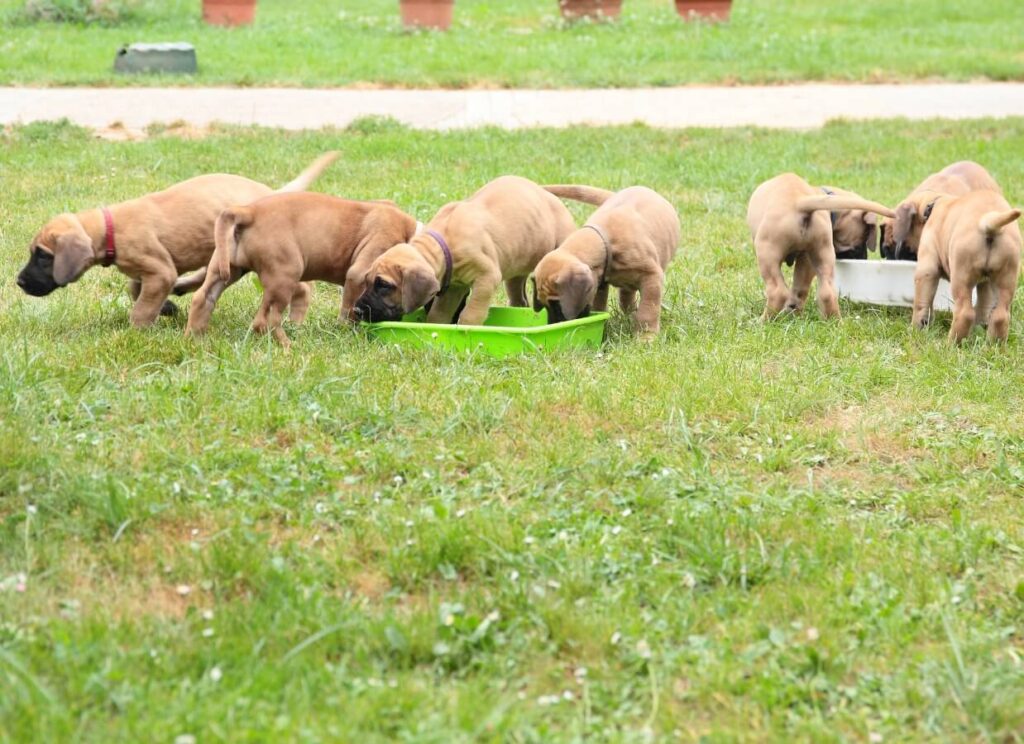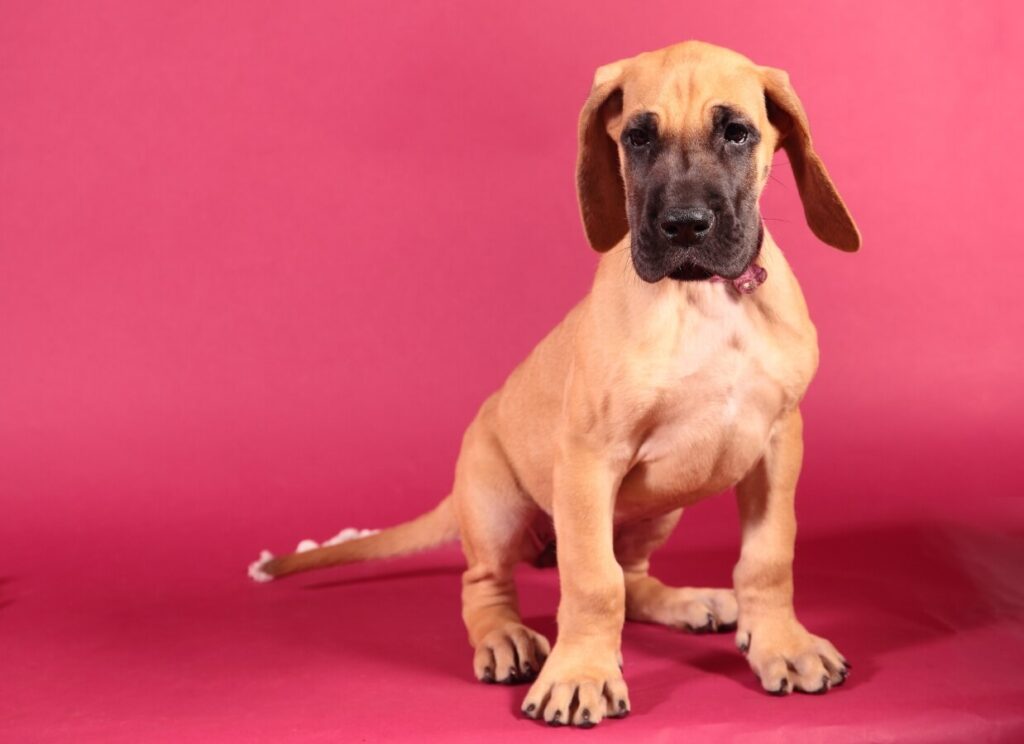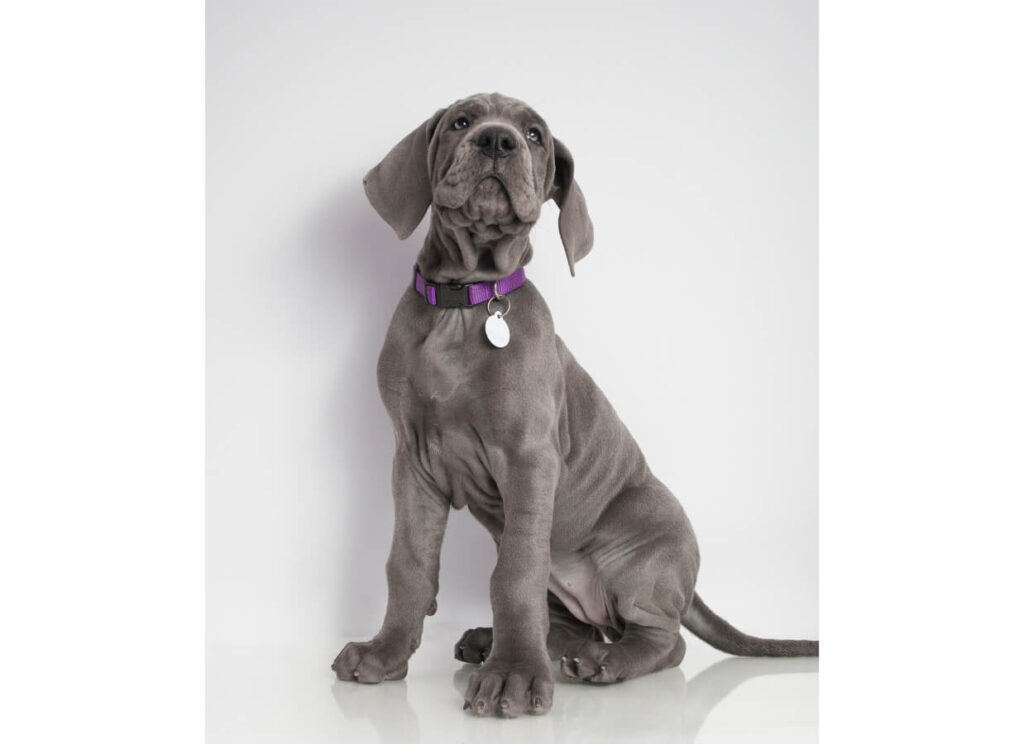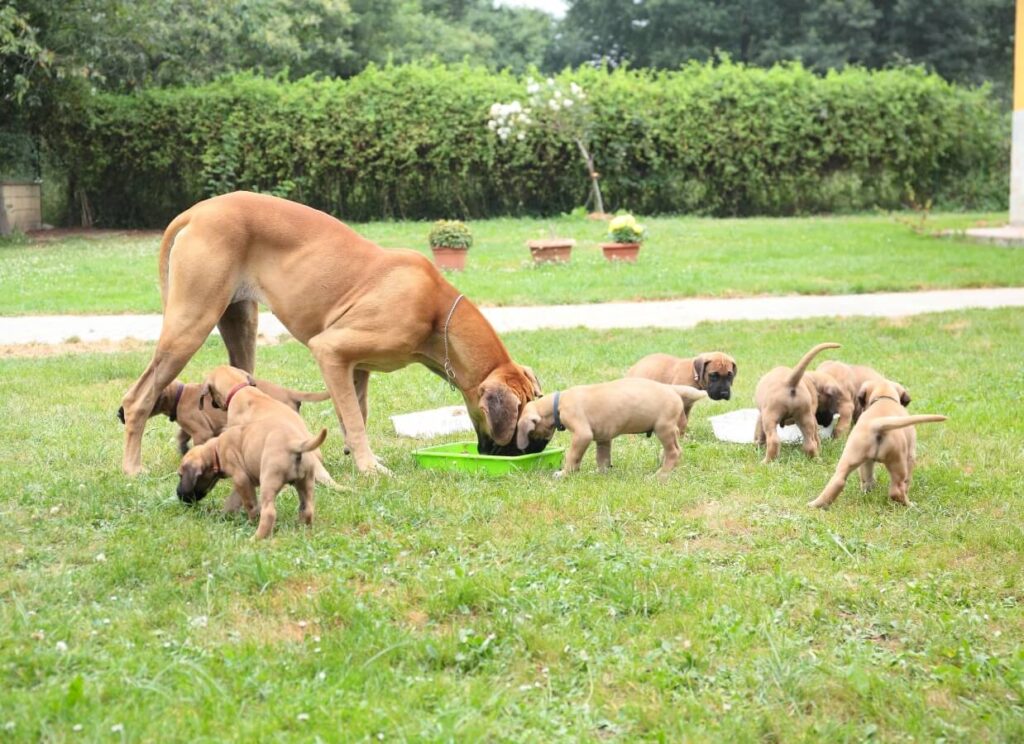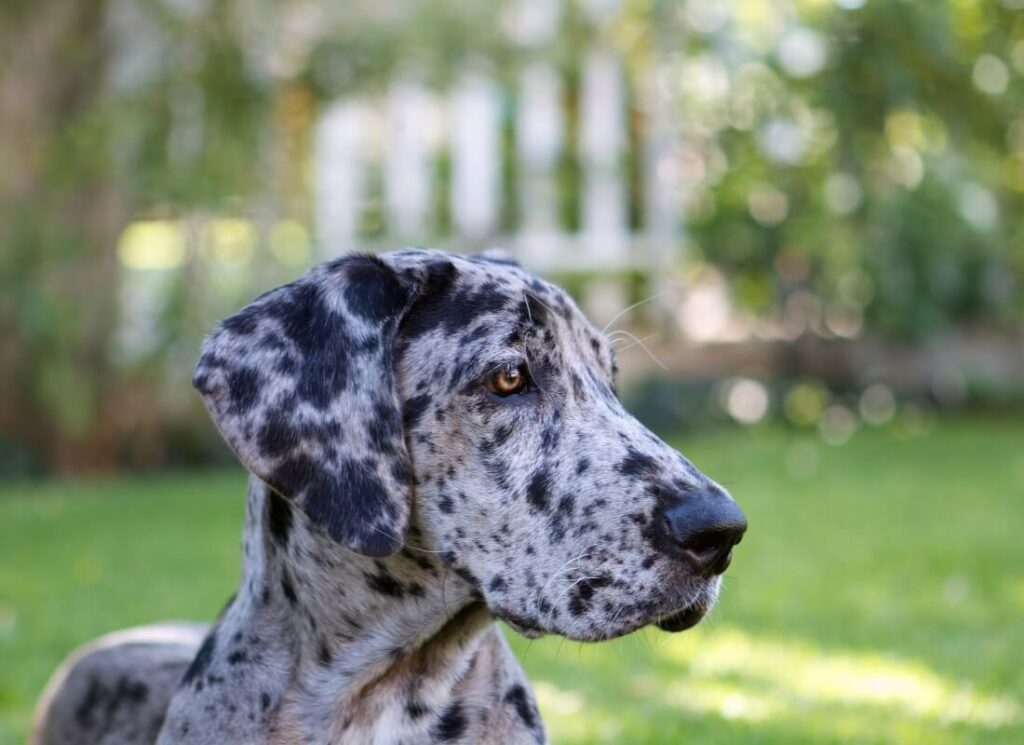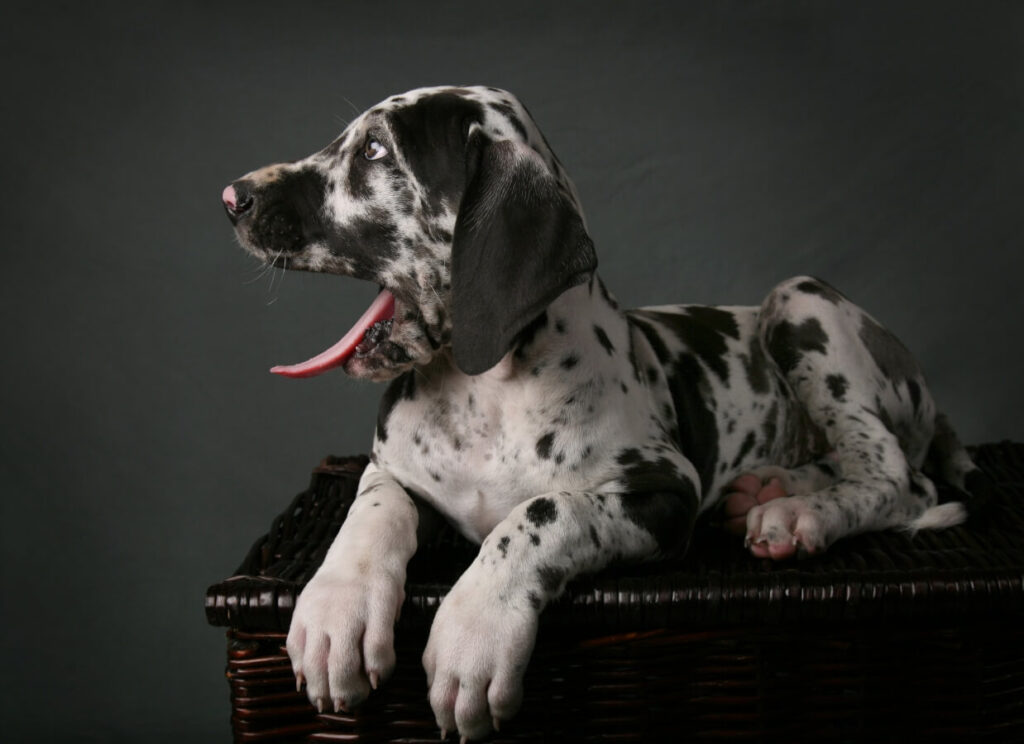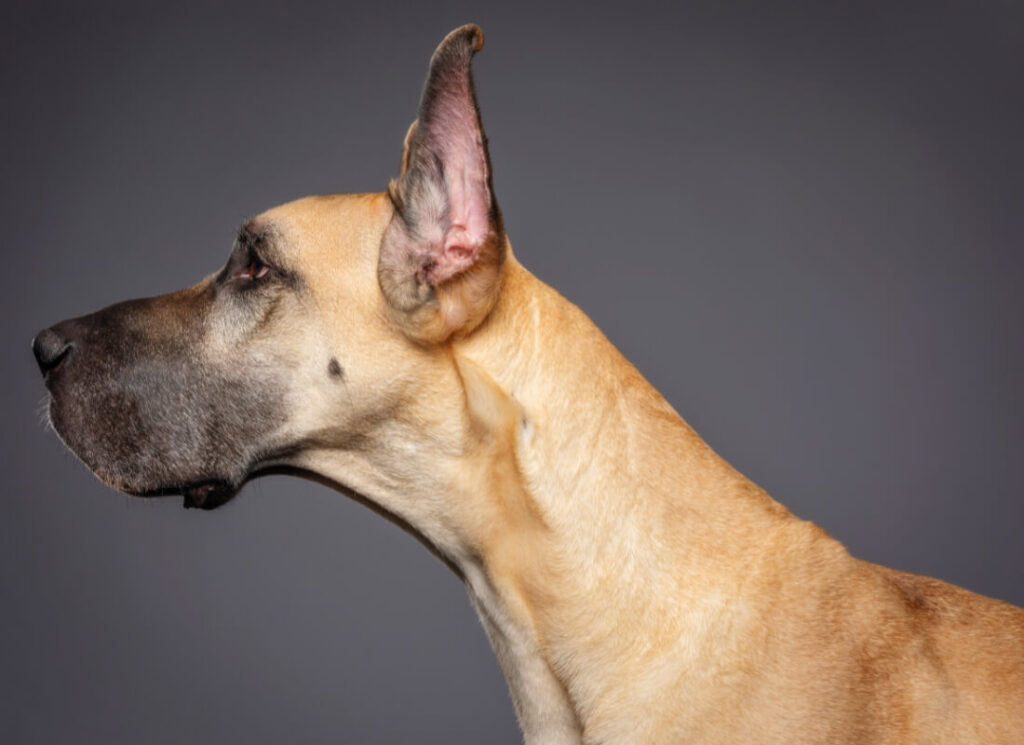You may have heard the term ‘Double Merle’ associated with Great Danes. Double Merle Great Danes can be beautiful, but why are they this color? How do you get a pure white Great Dane?
Here are 5 facts about white Great Danes that you maybe didn’t know!
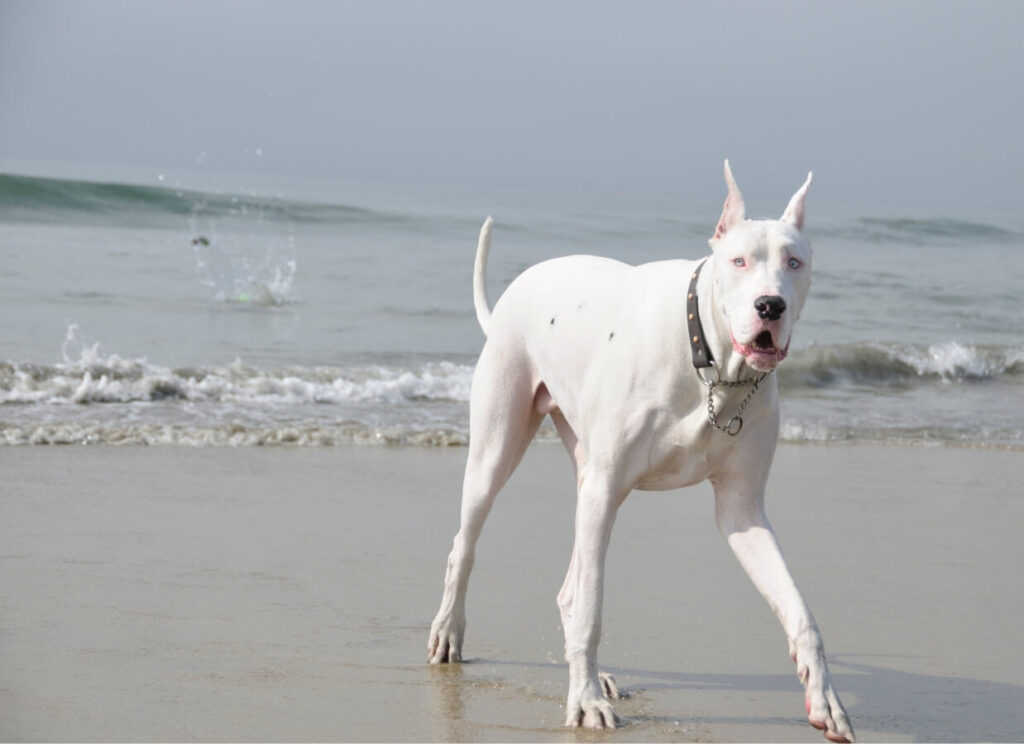
What Are Double Merle Great Danes?
A double merle Great Dane will be most often all white or close to it. (White Great Danes). Some may have merle patches and not be pure white.
As striking as they can be, this is not a color that should be intentionally produced, celebrated, or desired in Great Danes.
Double Merle Great Danes are often blind and/or deaf and can have other significant health problems, including autoimmune disorders, eye disorders, deformities, aggression, allergies, and problems with their heart, thyroid, and digestive system.
It’s important to note that not all ‘double merle’ dogs will have health or temprement problems. However, many will.
Many DM (double-merle) Great Danes are pure white, however, they can have some spots (most often merle patches). The absence of color around the ears and eyes is a contributing factor to deafness and blindness.
A Harlequin Great Dane is white with torn black patches and is NOT double-merle. Fawnequin and brindlequin are also not double merle, even though they have a white base coat like a harlequin does.
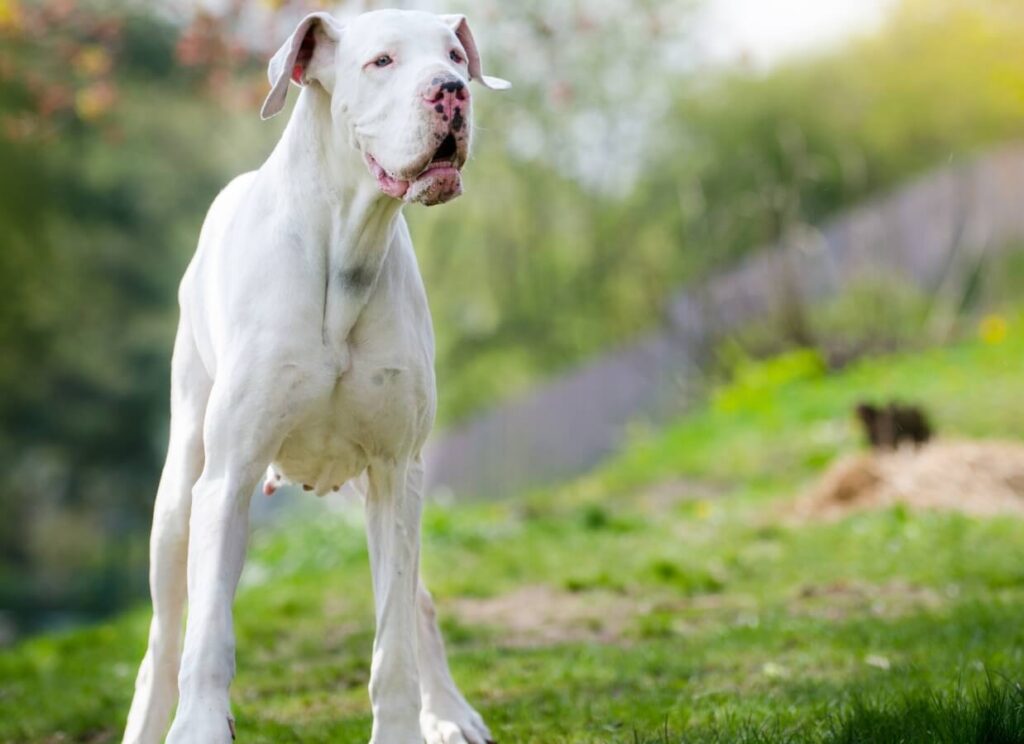
How Are Double Merle Great Danes Made?
Many Great Danes carry the merle gene. Merle genes are responsible for creating the beautiful Merle and Harlequin coats, as well as many off standard colors with spots (‘merlequin’, ‘fawnequin’, etc.).
By itself, the merle gene is ok.
When a puppy receives TWO copies of the merle gene (one from each parent that carries it), they are ‘double-merle’.
Double Merle puppies happen in litters where a breeder paired (either intentionally or accidentally) two dogs that each carry the merle gene. Not all puppies in a litter bred like this will be double-merle.
Each puppy in the litter has a 1-in-4 chance of receiving BOTH merle genes. To put this into perspective, that’s leaves each puppy (in the litter) a 75% chance that they will NOT be double merle, and have a normal single-merle coat pattern.
It is important to note that Double Merle dogs are 100% preventable.
This highlights the importance of genetic color testing prior to breeding, for breeders that are unsure if either dog in the pairing is merle or not. Color testing can be done HERE.
Double Merle Great Dane Health Problems
Not all white Great Danes will have health problems. However, because of their unique genetic makeup, many of them do. Here are some common things seen in double-merle Great Danes.
- Deafness
- Blindness
- Under developed eyes
- Eye problems that lead to pain or blindness
- Auto-immune disorders
- Allergies and skin sensitivities
- Poor overall conformation (resulting from bad breeding practices)
- Aggression, fear, and other temperament problems (instability)
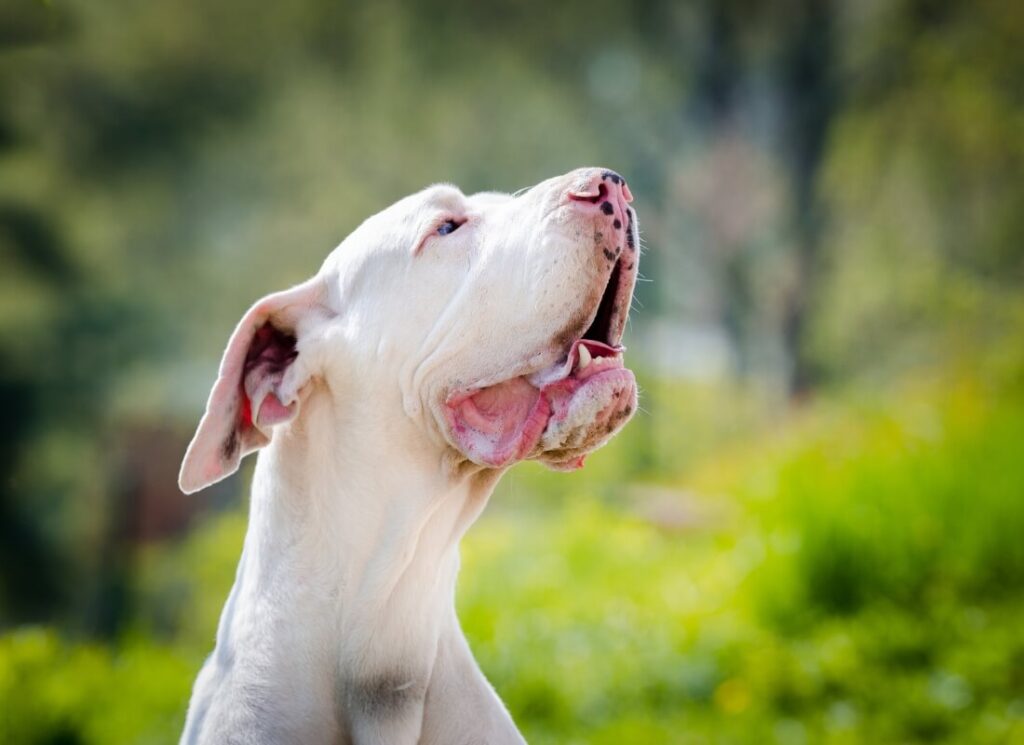
Double Merle Practices & History in Great Danes
Double merle dogs are most often produced by unethical backyard breeders who either had “no idea this could happen“, or didn’t care.
Some breeders pair merle + merle dogs because they are in pursuit of ‘interesting’ designer colors. The flashy merle gene may result in some puppies getting catchy or trending colors that sell well and result in profits for the breeder.
Additionally, in the world of show dogs, some show breeders intentionally pair two Harlequin Great Danes with exceptional pedigrees because the pairing may produce desirable ‘show marked Harlequins’.
At times, this is done because well-built and appropriate black or mantle studs are hard to find, and keeping the gene pool diverse is important.
Unlike the backyard breeders who don’t understand genetics, however, a show breeder pairing merle + merle will often utilize genetic testing and a thorough study of the pedigree, which can help greatly reduce the risks associated with this practice.
The actual length of the merle gene carried by each parent can affect the outcome, and will be part of the considerations involved when pairing two dogs with a merle gene. This is what makes color testing so important.
The GDCA condones this practice, as of this writing.
Editor’s Note: At Hello Danes we are fierce advocates for truly ethical show breeders. It’s important to note that there is a massive difference between a backyard breeder (whom we don’t support for any reason) and a breeder who is showing, color testing, and fully OFA health testing their dogs prior to breeding.
While we don’t personally condone the practice of breeding “spot to spot” for show purposes, we recognize that it happens and understand why. It’s seen in MANY pedigrees.
Our stance is that backyard breeders and unethical breeders, especially those breeding for fancy colors and dumping puppies in rescue are the biggest issue to contend with when it comes to double-merle dogs.
It’s important that Dane owners not get ‘lost’ in the double-merle discussion, as 100% of sick, unhealthy, abandoned double-merle puppies are coming from unethical breeders.
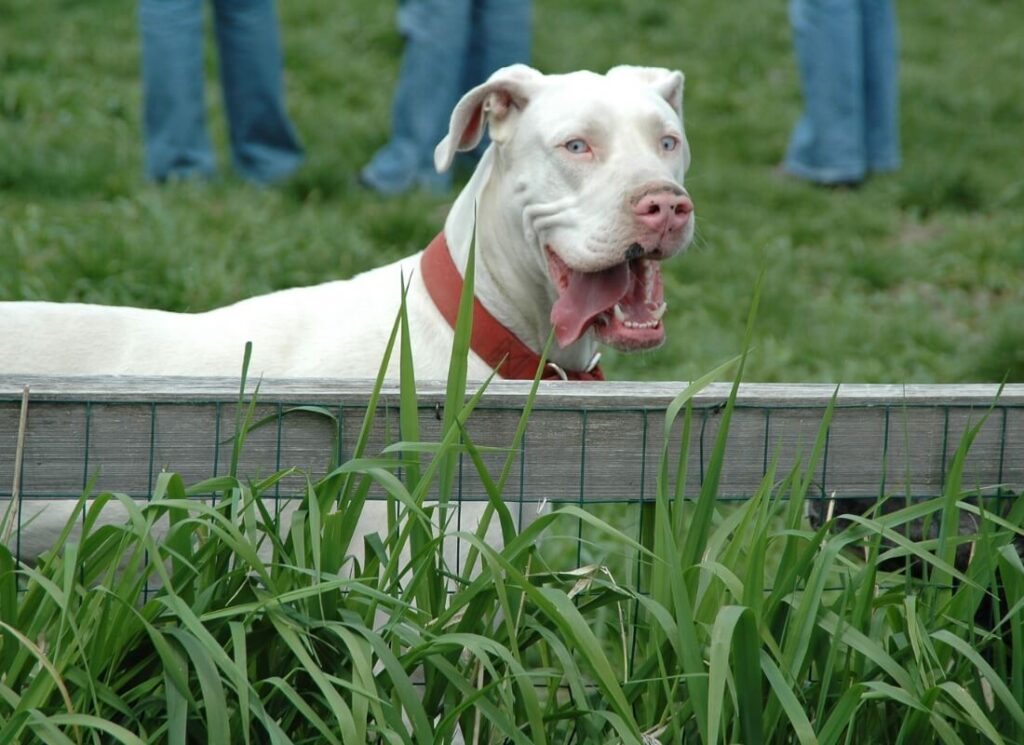
Double Merle Danes & Breeders
Unethical breeders who produce white puppies may lie to buyers about them. They will often say that they are a ‘designer color’ and sell them at a premium price. Many others will dump them on rescues when they are born.
These are not reputable practices. It doesn’t matter how ‘friendly’ or nice the breeder seems, if they are dumping white puppies or selling them at a premium, they are a backyard breeder.
The Great Dane Club of America condones the practice of hard culling (euthanizing) deaf double-merle puppies by 5 weeks of age; this is practiced by some breeders, most often the ‘old school’ type.
Advances in merle gene color testing, we believe, has greatly reduced this practice.
Other breeders (typically the show breeders that are focused on structure, health, and temperament) take responsibility for these pups (if they end up with some in a litter) and will find them suitable, quality homes and support them for life.
Always ask questions and never support breeders that don’t ethically take care of pups from their double-merle pairings!
In a spot-spot pairing, each puppy has a 25% (or 1 in 4) chance of receiving both copies of the merle gene (one from each parent), making them ‘double merle’.
Some of the double merle puppies will be reabsorbed by the mother long before birth, they simply don’t make it.
In a live litter, there may be no double merle puppies or there could be several.
Be clear about statistics with this one. Some people will say that 25% of the litter will be double merle, and that’s not how it works.
Each puppy is the one saddled with that 1-in-4 statistic, not the litter as a whole.
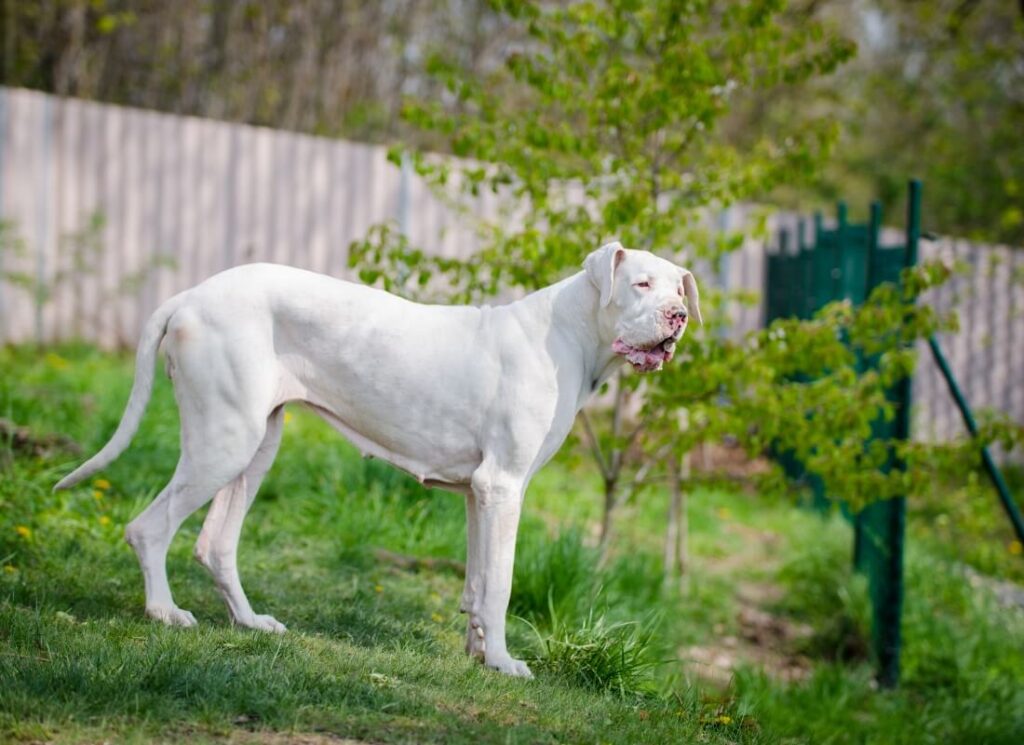
Great Dane Genetics & Color Testing
Ethical, educated breeders who aren’t sure and want to avoid breeding double-merle dogs in the first place will use modern advances in genetics testing to confirm the colors of each dog in a potential pairing.
Bad Breeders
Scam Breeders: What to Look For
Breeders: Shady Business
Should I Choose a Breeder or Rescue?
Choosing a Dog From a Show Breeder
What Makes a Breeder Good?
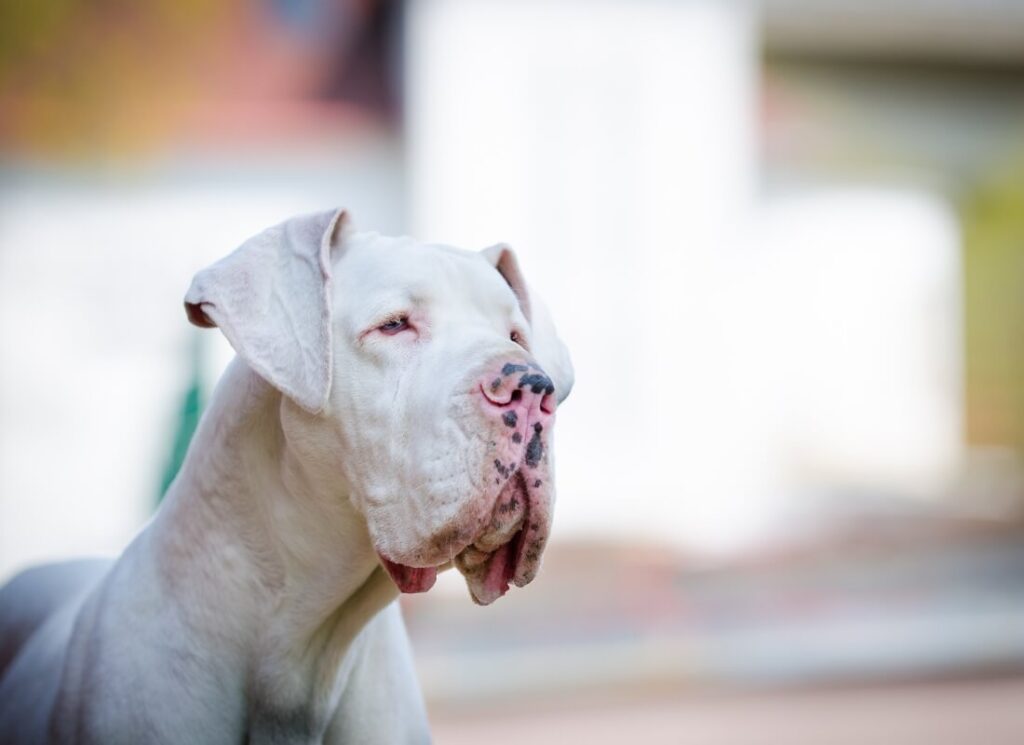
Off-Standard Colors & The Merle Gene
The merle gene is beautiful and flashy. It’s responsible for Harlequin and Merle (standard colors) which are always popular.
If you are looking for a color that isn’t accepted by the AKC as a show color, tread cautiously.
Some fancy colors are the result of spot-spot breedings, and unethical breeders will do this because they know it may get you to spend your money with them.
Merlequin is a popular off-standard color that comes from spot-spot breed pairings. Genetically, a Merlequin is actually a double-merle dog.
Like any other double-merle, this dog may or may not have health problems.
If you are set on finding a puppy in a ‘designer‘ color, make sure your breeder is focused first on health, structure, and temperament.
Merlequin are double-merle dogs who have the harlequin pattern (torn patches of color) but instead of having mostly black torn patches, all of their patches are merle. Imagine a harlequin Dane with merle spots instead of black and merle spots, essentially.
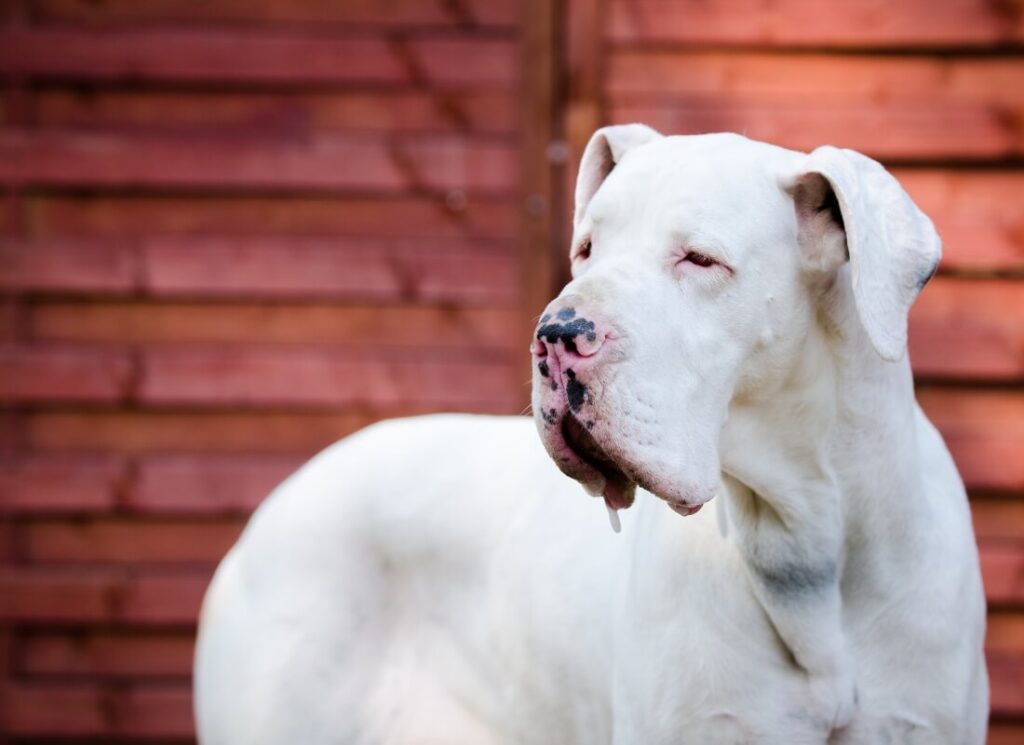
Double Merle Great Danes in Rescue
Entire rescues are dedicated to helping the double-merle dogs that are created by unethical breeding practices, and they are FULL.
Just the other day I saw a 4-month-old white puppy. The rescue was looking for a very special and hard-to-find home because the puppy was already showing signs of aggression, fear, and guarding.
She required surgery to remove her eyes because they did not develop properly. She also had additional structural problems that will lead to pain later in life.
Backyard breeding is not ok. This is not ok. We have to STOP supporting breeders that do this, whether it was intentional or not. The breeders won’t stop, so it’s up to us as puppy buyers and advocates for Great Danes.

Adopt a Double Merle Dog
If we want to stop the production of double-merle dogs, we have to educate people so that they stop rewarding breeders for producing them.
Double Merle dogs are 100% preventable. There is no excuse, but despite the existence of blogs, veterinary documents, reputable breeders, educated buyers, rescues, and people like us who shout from the rooftops, it still happens.
Share this with others, keep spreading the word. Great Dane owners with ‘ooops’ litters that happen ‘accidentally’ between their pet Danes are another contributor. This is also preventable through educated ownership and responsibility.
Support 501c3 Great Dane rescues, adopt double merles, choose only highly ethical breeders, and have fun with your Danes!
READ MORE:


